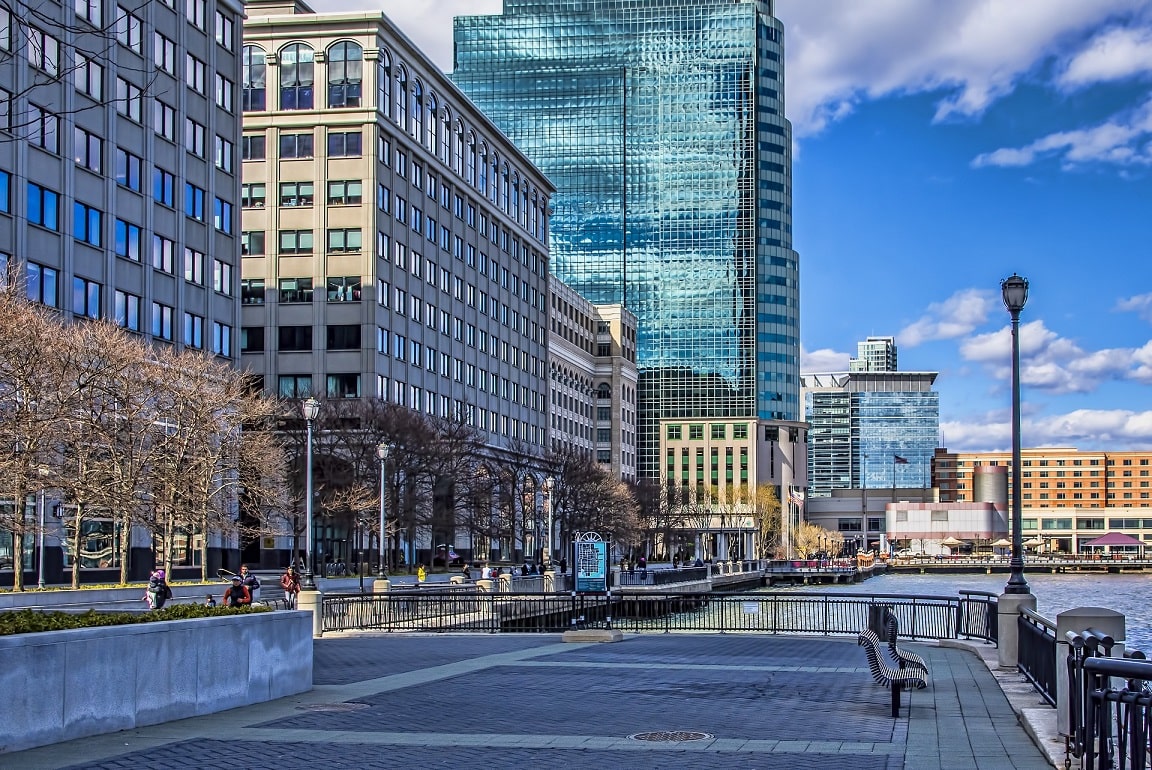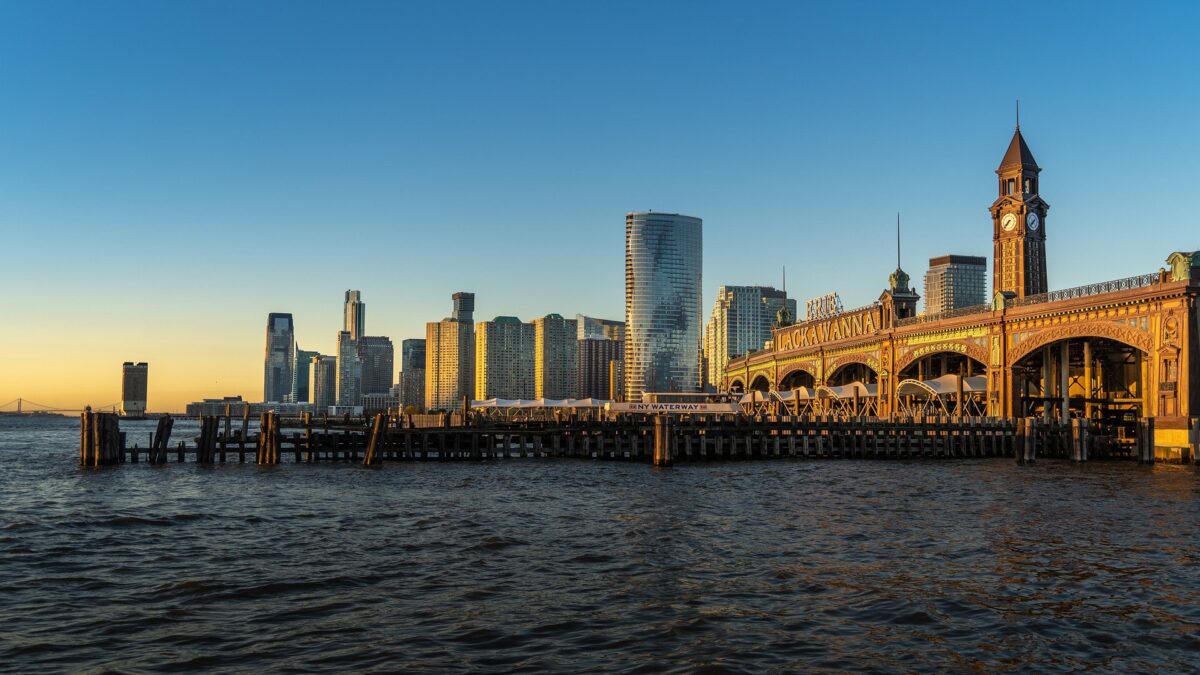Finding affordable housing in Manhattan is high impossible, which is why so many young professionals have started eyeing places like Jersey City. With its affordable rents and close proximity to New York City as well as its own bustling downtown area, it’s a perfect place for people who want the best of both worlds. If you’re considering a move to Jersey City, then this guide is for you! Read on to get all the information before you decide to make your big move!
Important Things to Know About Jersey City
It’s Crowded
Jersey City is the second-most populous city in New Jersey right after Neward. It also has the third-highest population density of any US city with over 100,000 people behind only New York City and San Francisco. With so many people, it’s not surprising that there’s a lot to do when it comes to activities, dining, and entertainment. However, if you’re hoping to get away from the busy streets of New York, Jersey City does offer some quiet pockets where you can live in peace and quiet.
It’s Called Wall Street West
You’ve probably heard of Wall Street, but over the years Jersey City has become one of the largest centers of banking and finance in the United States. It’s home to large financial institutions such as UBS, Chase, and Citibank to name just a few.
Easy Access to NYC
If you get tired of Jersey City, New York City is just around the corner. You can easily take the PATH train to the World Trade Center in just under ten minutes. From there you can reach midtown in around 20 minutes. This makes it closer to some parts of Queens and Brooklyn. Let’s not even mention Staten Island! If the train is down, there are also ferries that can take you to different parts of Manhattan and New Jersey so you have plenty of transportation options. You can also get to other parts of New Jersey via the light rail lines.
The Statue of Liberty and Most of Ellis Island is Part of Jersey City
Millions of people flock to NYC to visit the Statue of Liberty and Ellis Island, but both are actually part of New Jersey! You can easily access both iconic landmarks via Jersey City’s Liberty State Park. The area is called “The Gateway Region” because of how many US citizens have emigrated through these shores.
Jersey City Neighborhoods
Jersey City is a large and populous city so there’s plenty to discover in each of its neighborhoods. While they might all be part of the same city, each area offers something unique. Luckily, there’s something for everyone so you should be able to find a place that you like.
- Historic Downtown – if you’re looking for a night on the town, Downtown Jersey City is the perfect place as it is filled with bars, quality restaurants, clubs, and excellent shopping. As the name suggests, the area is known for its historical architecture and gorgeous brownstown buildings. Mixed in are awesome modern wall murals and high rises. It’s a great place for young professionals and even families as it is home to Hamilton Park that offers a playground for kids, a dog park, and even tennis courts.
- Newport – located along the waterfront, this area might technically be part of Historic Downtown, but it has its own vibe as it features more modern and luxury buildings and businesses. It also is home to the Newport Centre Mall that is home to four anchor tenants and 167 other stores and attractions.
- Exchange Place and Paulus Hook – Exchange Place is home to some of the largest financial institutions. As you would expect, it’s full of high rise buildings and bustling restaurants for the busy workers. Right next door is Paulus Hook, a residential community filled with brownstones, restaurants, and cafes.
- Journal Square – located at the intersection of Kennedy Boulevard and Bergen Avenue, Journal Square is the central transportation hub for Jersey City. As such, it’s home to plenty of businesses and has a bumping nightlife. It’s also home to Little India, a district with the highest population of Asian Indians in the Western Hemisphere. So if you’re looking for some authentic Indian fare, go to Journal Square.
- The Heights – Located in the north end of Jersey City, this area sits atop Hoboken and overlooks Mile Square. You can easily access the area by food from Hoboken if you want some great views of Manhattan. It’s a perfect location for those who like the outdoors as it is home to Pershing Field, Riverview-Fisk Park, and Western Slope.
- Bergen-Lafayette – This mostly residential neighborhood is great for people who want to get away from the nightlife. There’s a nice mix of historical and modern architecture with its Victorian houses and art deco apartments.
- Greenville – If you want to start or have started a family, Greenville is a great option as it’s home to some of the best schools in Jersey City including Dr. Ronald E. McNair Academic High school.
- The West Side – As the name suggests, this neighborhood is located on the West side of Jersey City surrounding West Side Avenue. It’s home to Lincoln Park, one of the largest county parks in Hudson County.
Schools in Jersey City
Jersey City offers plenty of highly-regarded educational institutions making it a great place to raise a family. In fact, with so many young professionals moving to the area, the public school system is expanding and improving to help accommodate all the new transplants.
One of the best public schools in New Jersey is located in Jersey City – the Dr. Ronald E. McNair Academic High School. This school is ranked 3rd in the state! Besides this, it’s also home to The Cornelia F. Bradford School. There are also many other options to choose from including charter and private schools, all of which have produced good test and college readiness levels.
When it comes to higher education, Jersey City is home to New Jersey City University, a four year university that offers a wide variety of undergraduate majors and even graduate courses. You can also attend Hudson County Community College where you can get your associates on a wide variety of majors and eventually transfer your credits to a four-year program.
Jersey City Jobs
As referenced above, Jersey City is home to one of the highest concentrations of financial institutions in the United States. It’s home to some of the largest financial institutions including UBS, Merrill Lynch, Chase Bank, Citibank, and Goldman Sachs. It is also the headquarters of Verisk Analytics and Lord Abbet, a privately held money management firm. Other companies such as Computershare, ADP, IPC Systems, and Fidelity Investments also do business out of the city.
Of course, it’s not just home to big finance. Jersey City also offers plenty of jobs in different markets including retail thanks to its many small shopping areas and, of course, Newport Mall and hospitality as there are plenty of restaurants and bars in the area. If you’re in the health sector there are several hospitals and clinics around the city so you can definitely find a job. With the growing number of transplants, there are also a lot of startups popping up around the area.
Cost of Living in Jersey City
If you’re used to the high cost of living in New York City, you’ll be happy to find that Jersey City is generally cheaper. More importantly, your take home pay may even be bigger as you won’t be subject to NYC taxes which can range from 2.9-3.9 percent of your annual income. On top of that, New Jersey federal taxes are lower than New York State, which can make your life much more affordable.
Besides the taxes, living in Jersey City is overall cheaper. While rents aren’t cheap by any means, you definitely get more bang for your buck. A $2,500 one-bedroom in Jersey City gets you almost double the space as a comparably priced one-bedroom in Manhattan. There may even be cheaper options available if you’re willing to look into different neighborhoods and housing options. Naturally, the closer you get to the waterfront, the higher the rent prices. High rise apartments will also cost you more as they also offer various amenities like swimming pools, gyms, and concierge services. Of course, you can find more affordable options as you move away from the water. You can still find apartments in Greenville and Bergen-Lafayette for under $1,500.
When it comes to groceries, health, and even utilities, you’ll be spending a lot less in Jersey City than you would in New York City. Heck, even restaurants and bars are slightly more affordable! Interestingly, the only utility that might be more expensive is your internet. Still, that’s a small price to pay when you’re saving so much in other areas. The best part is that you’re still super close to NYC so you don’t have to miss out on anything.
Safety and Crime
Okay, so how safe is Jersey City? Since the 1990s, Jersey City has slowly seen a decrease in crime rate though due to the relative size of the city there will always be some issues. For the most part, it’s generally safe to walk around in most areas during the day time. Downtown Jersey City and Exchange Place tend to be the safest areas of Jersey City. In general, the further away you get from the trains, the less ‘safe’ the areas are. With that said, it’s still relatively safe so long as you are aware and alert.
In terms of crime, the most common tends to be property crime though it’s still below the national median and below New Jersey’s average. There is some violent crime, but in general you can avoid getting into any trouble by not walking around late at night.
Jersey City Demographics
Jersey City has a population of around 292,449 people with a relatively even split between women and men – around 100 women for 100.1 men. The median age is 34.2 years old and the majority of residents are educated with around 44.9 percent of the population holding a bachelor’s degree or higher.
Jersey City is one of the more diverse cities in New Jersey with a healthy mix of people of different races. White people make up around 35.4 percent with Hispanic or Latino making up 28.8, Asians making up 25.4 and Black making up 24 percent. It’s no surprise that the area is so ethnically diverse as it is a major port of entry for immigration to the United States and a major employment center due to its close proximity to New York City.
Jersey City Weather
Jersey City’s climate is considered a humid subtropical climate, similar to that of New York City. That means you get hot, humid summers and mild to cool winters. For the most part, Jersey City doesn’t experience too many extreme weather events, but due to its proximity to the ocean it is susceptible to tropical storms and the occasional hurricanes.
In 2012 when Hurricane Sandy hit, half of Jersey City lost power and large sections of the Downtown area got flooded and needed to be evacuated. In order to prevent a similar problem in the future, the state has invested $43 billion to place barriers along the southern portion of New Jersey’s River waterfront.
Fun and Exciting Things to Do in Jersey City
There’s no shortage of things to do in Jersey City and there really is something or everyone. The city is full of history, great food, and plenty of art and live music. No matter what your interest or age, you can definitely find something to do.
Watch some live music or theater – If you love live music and theater then you’ll want to visit the Landmark Loew’s Theater in Journal Square. This venue has been around since the 1920s and has hosted many concerts, theater, and performing arts throughout the years.
Walk along the Hudson River Waterfront Walkway – Enjoy views of Manhattan while getting some fresh air. This boardwalk runs along the western shore of the Hudson River and it’s free to access!
Enjoy street art – unlike other cities, Jersey City encourages street art with their Jersey City Mural arts program. There are hundreds of officially sanctioned and unofficial outdoor works of arts. Some of the best places to see them include:
- Downtown Jersey City
- Grove Street
- Powerhouse Arts District
- Jersey Heights
- Near the Holland Tunnel
Experience the Downtown street fair – Every year since 2011, Jersey City hosts the All About Downtown Street Fair. Hundreds of vendors set up on Newark Avenue between Grove Street and Coles street for an amazing spectacle. You can get one-of-a-kind art pieces here and enjoy delicious eats.
Visit the local eateries – if you’re a foodie, Jersey City has some seriously great options. The city is home to a Michelin rated restaurant called Bohemia. Of course, Michelin stars aren’t the only thing that matters and there are plenty of delectable options from tacos to ramen and everything in between.
Moving to Jersey City with Professional Movers
Jersey City is one of the fastest growing cities in New Jersey. Whether you’re single or someone looking to raise a family, there’s a neighborhood for you! If you’re hoping to make a move, make sure to contact NJ Great Movers as we have plenty of experience moving people to Jersey City from Manhattan and other parts of New Jersey. Reach out to ask for a free quote!




